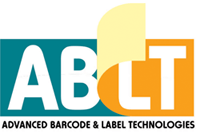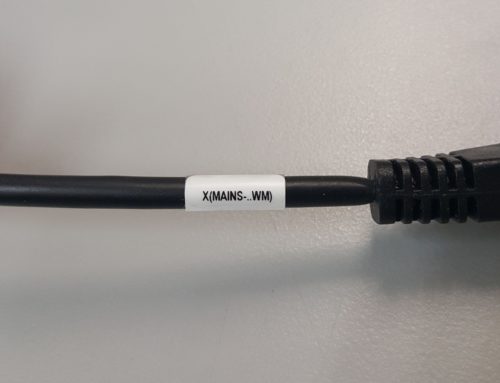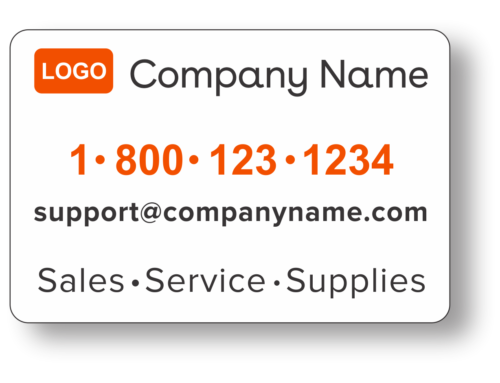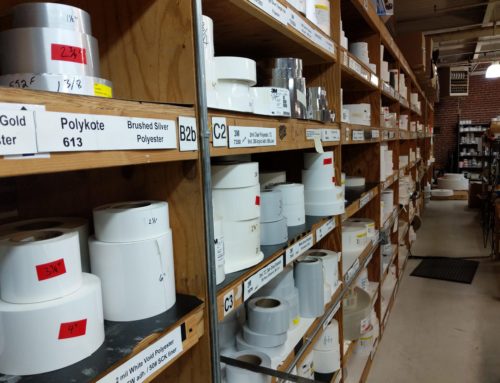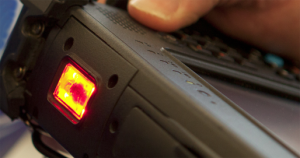 For a company, being able to know if a product has been tampered with can not only save time, but money as well.
For a company, being able to know if a product has been tampered with can not only save time, but money as well.
When a cash machine is tampered with, a blue dye explodes out of it. Wouldn’t it be nice if that same principle could be applied to labels?
The problem is that there are customers out there that want to defraud a company. This can be done by shipping back equipment for warranty work after the internal parts of the equipment have been swapped with parts that are out of warranty.
Companies work hard to make sure that their product is distinguished from the crowd, but someone will always be trying to copy their brand and make a buck off of it. To know that someone has tampered with a product to modify or hack the design would save companies immense amounts of money.
It would allow the company to void any contract, but it would also give the customers peace of mind. Customers want to know that the product has not been opened by someone else, and with tamper proof labels, they get that
The Problem
With labels, the problem is that they can be easily removed and put on another product or copied completely. This results in counterfeit products flooding into the market, not only hurting the reputation of the legitimate brand, but also robbing consumers of their money for an inferior product.
The Solution
Thankfully, there is a solution to this and it comes with the use of special adhesives, materials, or printing technologies. As a business, it must be determined which is the most important. Is it more critical to have a label that is copy-resistant, or a label that cannot be removed? Naturally, the more features that are on the tamper proof label, the more expensive it will be.
There are several types of tamper proof labels for you to choose from. These labels will break whenever someone tries to remove them, clearly showing tampering.
- Acetate labels: A hard film that is easily breakable.
- Polyester labels: Very durable and resistant to several conditions.
- Polyethylene labels: Suitable to curved and textured surfaces, it resists not only moisture,
but also tearing. - Vinyl labels: Durable and resistant to moisture, it is self-extinguishing when it is peeled off.
For tamper-proof label adhesives, there are three options:
- Non-residue: These are used to seal reusable packages since there is no residue left
over when the label is removed. A hidden message of VOID or OPENED can show up if
the product has been tampered with, however. - Low-residue: When the package is opened, VOID or OPENED will show up on the
surface of the label and the surface of the product. Some residue is left over. - High-residue: A sticky residue is left over when the label is removed, clearly showing
that the product has been tampered with.
If you are thinking of tamper proof labels, they tend to be perfect for marking equipment, assets, tools, and anything in inventory to preserve warranties and to seal and secure packages. Any item with a tamper-proof label on it can be very hard to sell, and can even contain a barcode of the rightful owner, allowing police to track the products quite easily.
With tamper-proof labels, is impossible to switch prices, change out products for warranty fraud, or to steal equipment components.
What do you need?
Now that you see what tamper-proof labels can do for you, you can determine what you need. To determine what you need, ask yourself a series of questions:
- How destructible does the label have to be? Does the label need to fall apart when
removed, and should there be a “VOID if removed” adhesive on the product? - What is the surface that the label is being applied to? All surfaces will impact labels
differently.
Tamper proof labels can be a great way to prevent your goods from being stolen, tampered with, or from being defrauded by a customer. They are inexpensive, easy to apply, and can save you a great deal of money.
